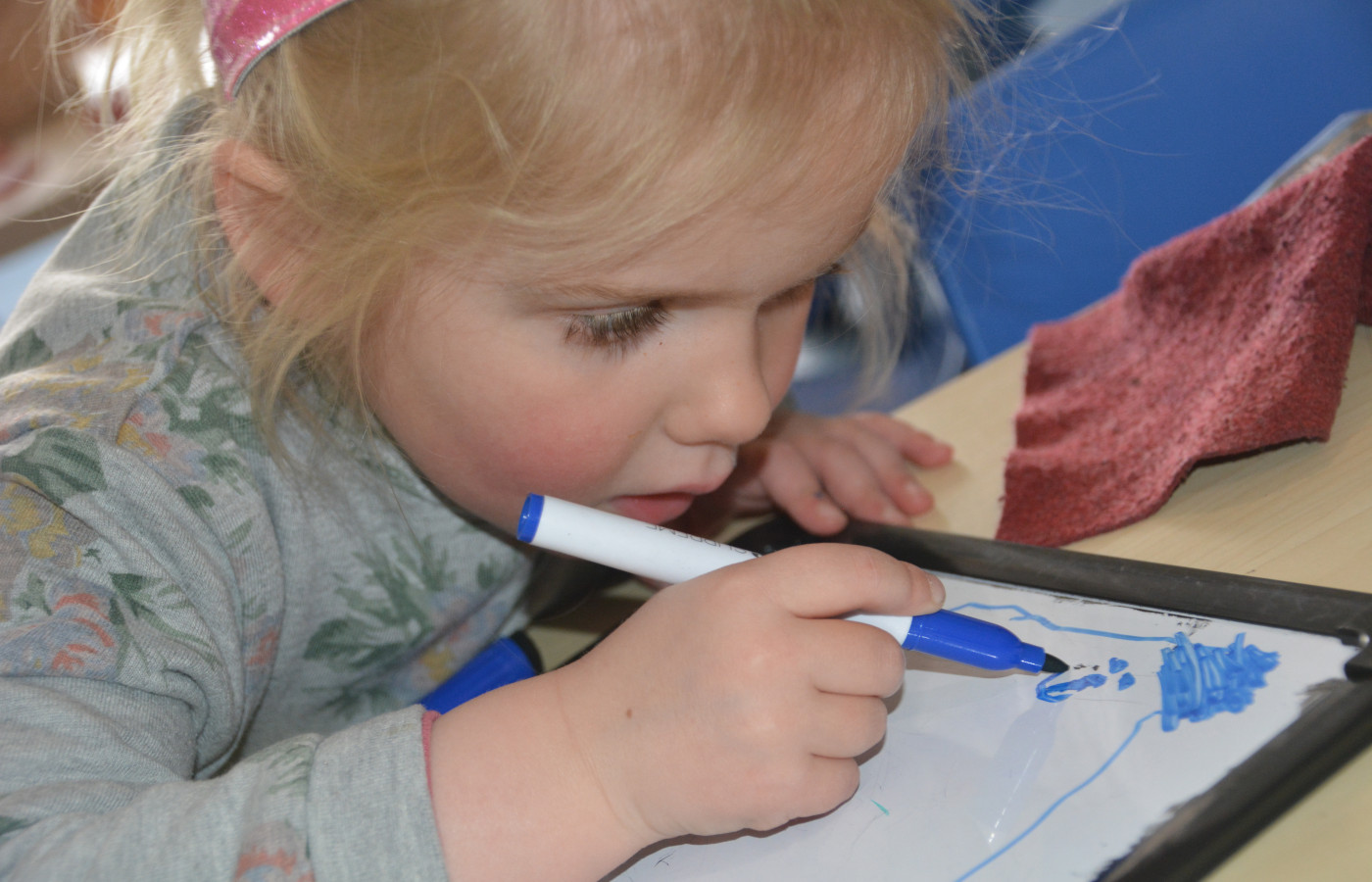White board drawing

White board drawing
Drawing and creating on a whiteboard
Materials Required
- White board or window
- White board markers
- Cloth to wipe off or baby wipes
Chalk and chalk board if you do not have a white board
Play experience profile
-
Ages:
-
Min Playtime5 - 15 Minutes
-
Skills
-
Energy LevelQuiet Play
-
Messiness Rating
-
EYLF Outcomes
Play Experience Preparation
Prepare a clean space on your table surface - Lay out white board markers and white board - Have a cloth or baby wipes handy for wipingExperience Steps
- Show your child the white board markers and talk about the colours.
- Encourage your child to draw on the white board or window.
- Encourage your child to talk about what they are drawing.
- Play some relaxing music to encourage creativity.

What to talk about, or questions to ask during the experience
- Colours e.g. red, yellow, blue, brown etc.
- Up and down
- Round and round - fast/slow
- Circles, dots, lines, shapes
- Let's talk about what you are drawing
- Tell me about your drawing
Build on this...
- You could encourage your children to draw a portrait of you on the whiteboard or a pet.
- Scribe a story about their drawing so they see you writing.
WHO guidelines for physical activity and sedentary behaviour
Provide evidence-based public health recommendations for children, adolescents and adults on physical activity.
Learn more
Provide evidence-based public health recommendations for children, adolescents and adults on physical activity. Learn more
This a is a calm and quiet activity. Children will need other opportunities during the day to use physical energy.
EYLF Outcomes
The Early Years Learning Framework has been designed for use by early childhood educators working in partnership with families, children’s first and most influential educators.
View PDF
The Early Years Learning Framework has been designed for use by early childhood educators working in partnership with families, children’s first and most influential educators. View PDF
- Children develop dispositions for learning such as curiosity, cooperation, confidence, creativity, commitment, enthusiasm, persistence, imagination and reflexivity
- Children transfer and adapt what they have learned from one context to another
EYLF Principle
Principle 3: High expectations and equity. Children progress well when they, their parents and educators hold high expectations for their achievement in learning.
EYLF Practice
Practice: Intentional teaching. Intentional teaching is deliberate, purposeful and thoughtful. They use strategies such as modelling and demonstrating, open questioning, speculating, explaining, engaging in shared thinking and problem solving to extend children’s thinking and learning.
Author:


